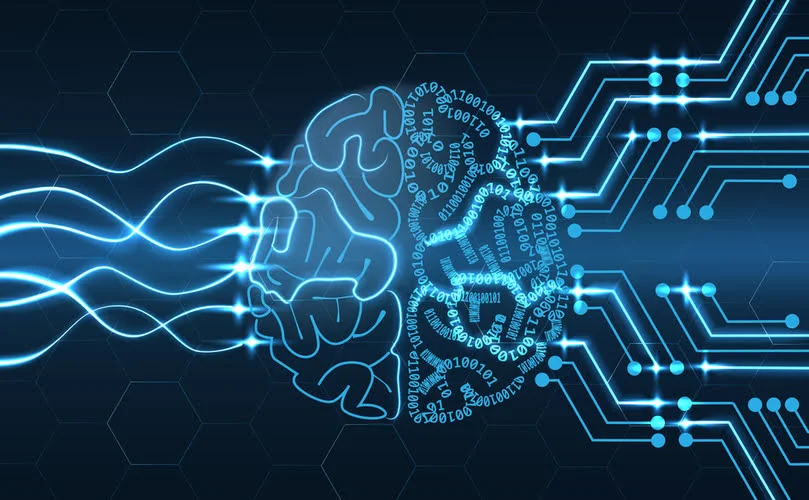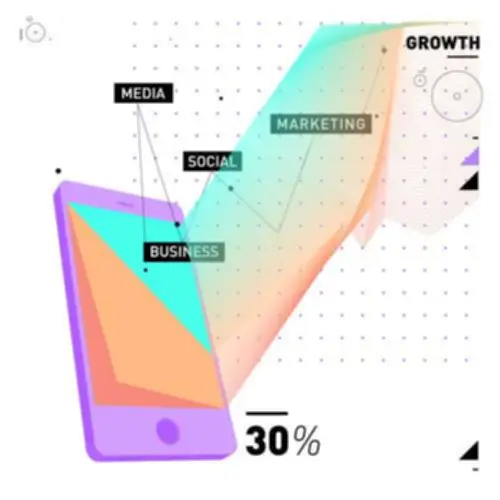The relentless enlargement of AI brings about concerns about the future of work (Adamczyk et al., 2021; Park & Kim, 2022; Petersen et al., 2022). According to some stories, an estimated 50% of the present occupations could additionally be displaced due to automation (Frey & Osborne, 2017; Petersen et al., 2022). Trust turns into an important issue for overcoming a considerable ai trust uncertainty which pervades the event and deployment of AI. If trustworthiness has inherently predictable and normative parts, AI fundamentally lacks the qualities that would make it worthy of belief.
- Building on these foundations, the benefits of conceptual modeling are actually being prolonged to AI.
- Likewise, others have instructed that mitigation methods must be put in place using so-called “AI boxing” in order to make certain that large-scale social damage is prevented in cases the place researchers erroneously believe they have succeeded at both initiatives (Chalmers, 2010).
- There are many challenges and obstacles to lowering mistrust in artificial intelligence systems.
- Conversely, if the aim is to casually inquire on whether the broker experiences increased foot traffic within the location, belief in the same broker is less consequential.
- Without no less than a minimal amount of trust in others, we might turn out to be paranoid and isolationist because of worry of deceit and hurt (O’Neill 2002, p. 12).
Oblique, Passive Customers And Others Affected By Ai
To have moral AI that isn’t inflicting inequalities, it’s essential to begin with a transparent imaginative and prescient and understanding of who is training AI, what knowledge was used, and what went into their algorithms’ suggestions.1 This is a tall order and requires a transparent and deliberate strategy. How can we tackle its limitations and guide its use for the benefit of communities worldwide? Artificial intelligence (AI) has evolved from an experimental laptop algorithm used by academic researchers to a commercially dependable technique of sifting through large units of data that detect patterns not readily obvious through extra rudimentary search tools. As a end result, AI-based programs are helping medical doctors make more informed decisions about patient care, metropolis planners align roads and highways to scale back visitors congestion with better efficiency, and merchants scan financial transactions to rapidly flag suspicious purchases.
Distinction Between Empathy In Human’s Trust In Ai And Empathy In Ai’s Belief In Human Brokers
Thus, the issue of trust (and distrust) of AI is obviously advanced, multilayered, deeply intertwined with economic, social, political, and psychological elements, in addition to the technology itself. Whereas traditionally AI focused on logic-based models, the expansion of data, coupled with advances in computational energy, shifted the major target nearly solely to data-intensive AI. Machine studying, where computer systems are skilled to extract useful patterns from information, is now the dominant type of AI (Agrawal et al., 2018; Cerf, 2019). In addition, methods, corresponding to pure language processing (extraction and processing of pure human language) and computer imaginative and prescient (extraction of meaning from images and video), are additionally distinguished (Eisenstein, 2019; McAfee & Brynjolfsson, 2017). Avoiding that threshold is especially essential because AI is more and more being integrated into important methods, which embody things corresponding to electric grids, the web and military techniques. In critical methods, trust is paramount, and undesirable conduct may have lethal consequences.
Understanding Ai’s Strengths And Limitations
People could also be fearful of getting into self-driving cars, refuse AI robots in elderly care services, or fear incorporating AI into one’s enterprise mannequin. The rational account of belief states that the trustor is making a logical selection, weighing up the professionals and cons, when determining whether to put their trust within the trustee. It is a rational calculation of whether or not the trustee is somebody that will uphold the belief positioned in them (Mollering 2006).
Special Issue On “Belief In Artificial Intelligence”
The former explains the general behavior of an AI model, whereas the latter explains its decision course of in response to a specific input. It was shown that the worldwide explanations concerning the process had no influence on instant satisfaction and trust but improved later judgments of understanding in regards to the AI. On the other hand, local justifications have been found efficient, but their effect is time-sensitive. For occasion, throughout a critical state of affairs or when AI was making errors, local justifications had been very efficient and highly effective explanations (Lui and Lamb, 2018).
Matthias’ declare is that it would be unfair to carry the designers of AI answerable for damage or harm attributable to them—because they can learn, act on their own, and builders do not have full management over them. However, even when there is a strong degree of impartial decision-making, if AI causes hurt, then someone must be held liable for their actions (Goertzel 2002). Those who develop, create, and combine AI into society shouldn’t be allowed to rescind their duty, simply because their creations act differently to how they have been designed (Johnson 2006). This can be stated for any organisation creating a product for the market—that they have a social duty to make sure that their products do not cause hurt to people within society and abide by the legislation. This is nothing new, and just because AI has a higher stage of autonomy than different artefacts, doesn’t represent an obfuscation of accountability on those designing, deploying, and using them. In the Everest instance, while my good friend possessed the moral competence, he strongly lacks the bodily competence, required to fulfil this activity.
Normative accounts of belief require moral brokers to be held answerable for their actions, whether they carry out the exercise they’re trusted with or in the occasion that they breach this belief. For AI to be categorised as one thing that we can trust, it will require an specific capacity to be morally liable for its actions, particularly, the act that it’s entrusted to carry out. AI does not have the capability to be trusted according to the normative account of belief.

This progression is further enabled by the progress in data technologies, including AI, allowing more nuanced and personalised product and repair offerings. Complexity of human social, political and economic methods is expected to increase as human improvement marches on (Harari, 2016; Lukyanenko et al., 2022). They also turn out to be the basis for a deeper and extra rigorous understanding the character of trust in synthetic intelligence.
Trust has been evolutionarily beneficial for people (Yamagishi, 2011) and is argued to be a prerequisite for any social interplay (Luhmann, 2018). These definitions reveal the big selection of conceptualizations of belief (and belief in AI). They also reveal the shortage of consensus on understanding the character of trust, resulting in the necessity to develop the Foundational Trust Framework offered later in this preface.
AI is advancing quick as evidenced by increased language expertise and object recognition in pictures, and after we misunderstand how a lot to trust it, issues can go incorrect, especially in high-stakes situations. If we belief our capacity to work with it too little, then we begin to throw photographs out of artwork contests prematurely and firms lose competitive advantage by not benefiting from productivity will increase. Not understanding when to belief or when to doubt AI is causing issues and even risks. This will probably get worse until us people discover ways to handle AI and determine the means to put this trust (and mis-trust) into motion. If this sounds harking again to the cybersecurity panorama, that could be as a outcome of it’s. Just as security-conscious firms have adopted layered approaches to information and community protection, we count on information retailers and social media companies will likely want multiple tools—along with content material provenance measures—to help decide the credibility of digital content material.

Hence, underneath the assumption that trust is at all times present, we are in a position to view the aim of the interaction as a moderator upon trust. Specifically, the purpose determines how many, and the degree of detail, of the properties of the system under consideration that the agents of belief ought to analyze and think about when creating belief. A more effective strategy to tackling belief in AI begins with a greater understanding of the foundations of this complicated issue. We need to establish the basics and fundamentals to have a stable basis for debate and development of the options. This was the original intent of Luhmann (2018), who supplied perhaps the most in depth theory of belief. We are motivated by this effort and further formalize and prolong Luhmann to construct grounded, rigorous, and fruitful foundation for future studies on belief and belief in AI.

Indeed, it makes a extra fundamental declare that belief is a prerequisite for interaction. This generalization makes it attainable to explore various sorts of reasons for constructing belief in AI expertise, such as ensuring security, comfort, social concord, in addition to profitability, and financial utility. It also encourages the pursuit of broader dependent variables of human-AI belief (such as social harmony, human happiness and well-being). The Definition 2 accounts for the growing number of instances where technologies are interacting with people and different applied sciences directly, corresponding to an Internet of Things system, or autonomous inventory trading algorithm. In these technologies we are able to understand belief as designed procedures that controls the method to work together with different methods (computers or humans) primarily based on the consideration of their properties. While all methods interact with other methods, humans (or different brokers of trust), will not be aware of all systemic interactions.
Recently, there has been a substantial amount of interest in blockchain applied sciences. In this area, technical factors of trust and fashions of belief are necessary since AI–AI interplay is prevalent in this domain. A platform where consumers and information providers can transact data and/or fashions and derive worth was proposed contemplating belief complications, on condition that preserving belief throughout these transactions is a paramount concern (Sarpatwar et al., 2019). This examine targeted on the use of blockchain know-how in the subject of transfer studying, where a consumer entity needs to acquire a big training set from different private information providers that match a small validation dataset supplied by the patron. Data providers expect a fair worth for his or her contribution, and the buyer additionally wants to maximize their benefit. They applied a distributed protocol on a blockchain that gives guarantees on privacy and shopper benefit that plays a vital role in addressing the difficulty of truthful value attribution and privateness in a trustable means.
Whether or not human trust in AI must be enhanced within the first place, although, is extremely context-specific. When there might be good reason to believe that scepticism is preventing folks from utilizing AI methods that can profit them, our analysis provides interventions to assist overcome this by enhancing or suppressing the perceived company of the AI to minimize back betrayal aversion and promote belief. As this is heightened when coping with entities perceived to own high agency, the anticipated psychological cost of the AI expertise violating trust will increase with how agentic it seems to be. If AI with high perceived company fails or acts in opposition to the user’s pursuits, the sensation of betrayal is more significant compared to know-how that appears to have less company.
Transform Your Business With AI Software Development Solutions https://www.globalcloudteam.com/ — be successful, be the first!

